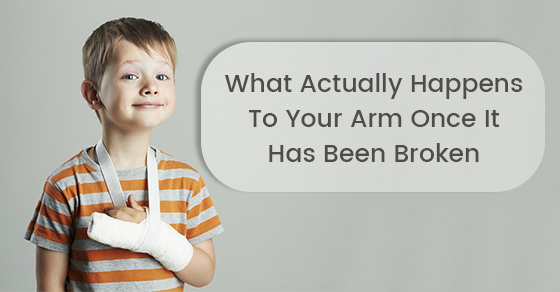Following a car accident, you may experience a broken arm. The impact from the collision can cause your arm to bend in unnatural ways, smash into the dashboard, steering wheel or doors, or become crushed by the weight of the accident. Usually, the aforementioned events create a fracture (broken bone) that can leave you in debilitating pain.
What are the different types of arm fractures?
The high-energy impact of an automobile accident leads the bones and surrounding soft tissues in the arm to react violently. The different types of fractures are:
-
- Greenstick fracture: This type of fracture occurs when the bone is only cracked on one side.
-
- Hairline fracture: A hairline fracture happens when the bone sustains a small, thin break (often as tiny as a strand of hair, hence the name).
-
- Transverse fracture: This type of fracture occurs when there is a simple break across the bone.
-
- Spiral fracture: When the bone is so severely broken that it twists apart, you get a spiral fracture.
-
- Comminuted fracture: Comminuted fractures happen when the bone is crushed into several pieces or splintered or broken in more than one place.
-
- Bowing fracture: When the bone bends but does not break, it is known as a bowing fracture. This type of fracture only occurs in children because their bones are still springy and resilient, and the membrane that envelops them (the periosteum) is very thick.
When a bone is fractured and pierces the skin, it is known as an open fracture. Conversely, when the fracture is less severe and does not break the skin, it is called a closed fracture.
How does the body react to a broken arm?
After a car accident that results in a broken arm, you may feel dizzy, groggy or extremely cold. This is your body going into shock. When your body goes into shock, it is working overtime to try to protect the fractured area. You may feel excruciating pain, numbness or nothing at all in the first few minutes after breaking a bone. The area may start to swell or bruise, and your broken arm may actually look like it’s bent in the wrong direction or appear shorter than the other.
When emergency medical technicians (EMTs) arrive on the scene, they will be careful when moving you to the ambulance to ensure that your arm does not break further. The area is extremely sensitive, and even the slightest miscalculated movement can cause additional breaks to the arm. The EMT may place your arm in a splint to keep it in place during the ambulance ride.
Within a few hours after a fracture occurs, your immune system will kick into high gear and create a clot around the break. A clot forms so that the immune system cells in the blood can destroy any germs that have found themselves in the area. Depending on the severity of the fracture, after a few days or months, special cells known as chondroblasts form a soft collagen callus to cushion the break. Eventually, the callus hardens to create a new bone, which will then be broken down as you heal to return the bone to its original shape.
What does the treatment process for a broken arm entail?
Broken arm recovery treatment following a car accident begins with the doctor setting the bone in place. Then, your arm is wrapped in a cast to keep the bone from moving. The length of time you need to wear the cast depends on the severity of the break and can be as short as one month or as long as six months. If the break is so severe that the arm cannot be healed with a cast alone, metal pins can be inserted into the area to push the bone to set into the correct position. Once the bone has fully healed, the pins are removed. However, if the fracture sustained to your arm is open, surgery will likely be required to repair the damage.
You will be prescribed painkillers and antibiotics to help you deal with the discomfort of your broken arm. You will also need to rest, and if it is your dominant hand that is broken, you may need to take time off work. Broken arm recovery is a careful process, however, when done right can provide you with restore function and use.
When the bone is healed and the cast and pins have been removed, your doctor will recommend physical therapy for complete rehabilitation. Your therapist will start with gentle exercises to help restore range of motion. As your rehabilitation progresses, more exercises will be added to restore the muscles and strengthen the arm. Your physiotherapist may also perform massage therapy to stimulate the tissues and promote healing.
Even after you have recovered from your broken arm, you may be apprehensive about getting in a car again. Your physician and physiotherapist can help restore your confidence.
If you’ve recently received a broken arm from a car accident, contact Focus Physiotherapy to learn more about your broken arm recovery.

